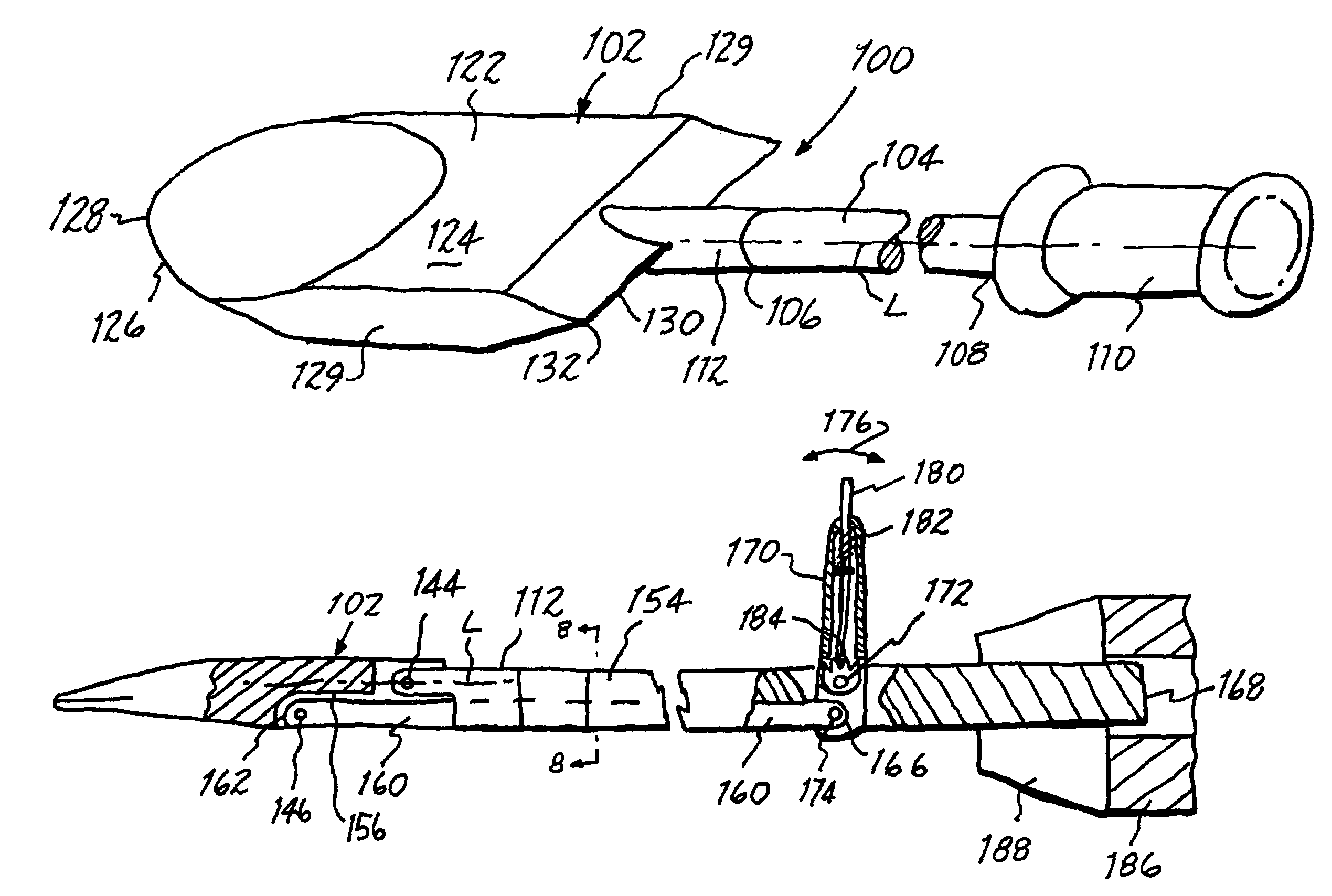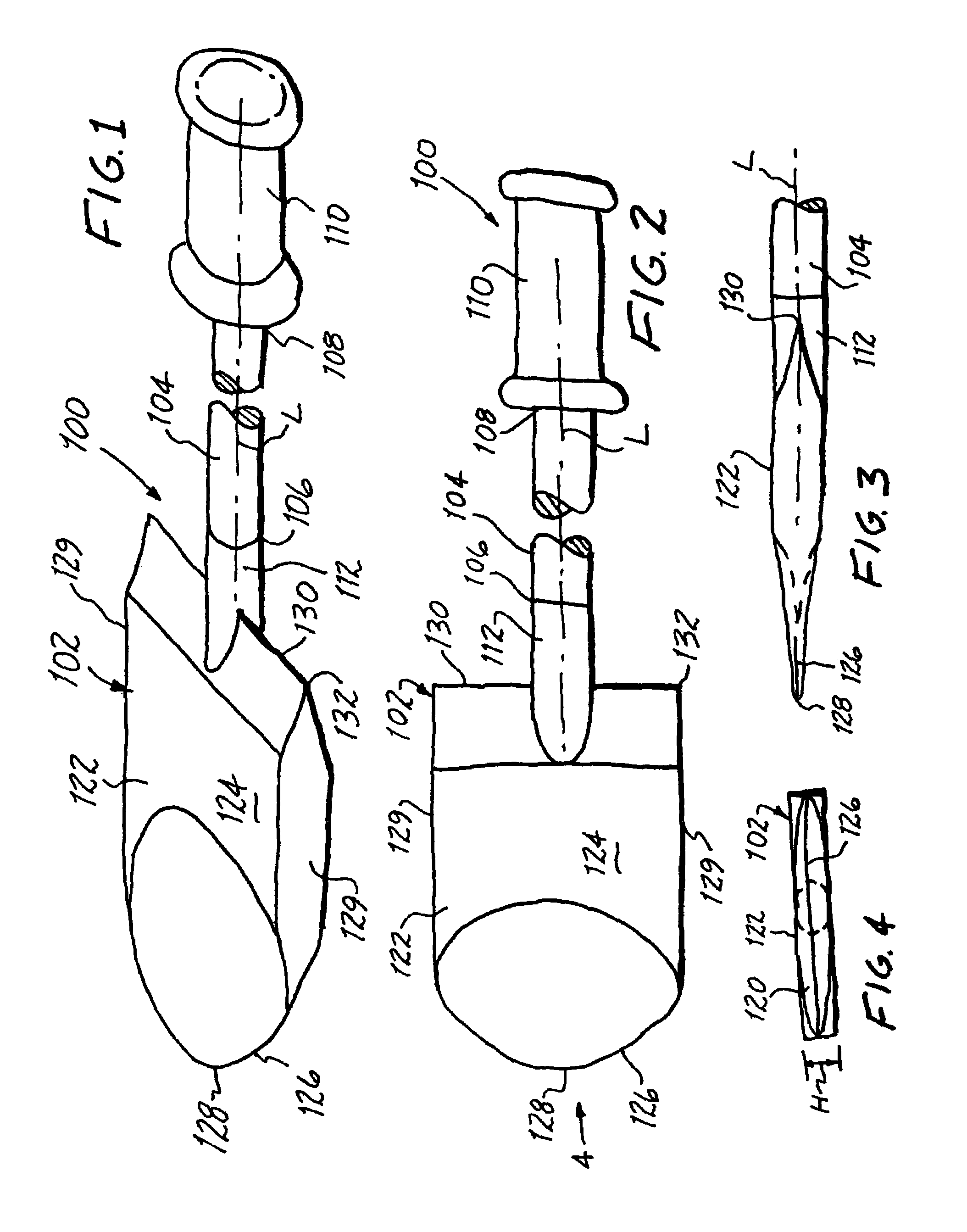Apparatus and method for the reduction of bone fractures
a bone fracture and apparatus technology, applied in the field of bone fracture reduction, can solve the problems of reducing open fractures with substantial risks to patients, joint stiffness, and potentially serious functional restrictions affecting daily living, so as to reduce bone fractures, avoid drawbacks, and reduce the effect of fractures
- Summary
- Abstract
- Description
- Claims
- Application Information
AI Technical Summary
Benefits of technology
Problems solved by technology
Method used
Image
Examples
Embodiment Construction
[0050]Referring now to the drawing, and especially to FIGS. 1 through 4, an instrument constructed in accordance with the present invention is illustrated at 100 and is seen to have a working head 102 and a stem 104, the stem 104 extending along a longitudinal axis L between a first end 106 connected to the working head 102 and a second end 108 remote from the working head 102. A handle 110 at the remote second end 108 enables manipulation of the instrument 100, while a connection 112 connects the working head 102 to the first end 106 of the stem 104 for selective articulation of the working head 102 relative to the stem 104, all as will be described in greater detail below.
[0051]Working head 102 has an insertion area 120 transverse to the direction which extends along the longitudinal axis L, and an essentially rigid working face 122 extending over a working area 124, the working area 124 being substantially greater than the insertion area 120, providing the working head 102 with a...
PUM
 Login to View More
Login to View More Abstract
Description
Claims
Application Information
 Login to View More
Login to View More - R&D
- Intellectual Property
- Life Sciences
- Materials
- Tech Scout
- Unparalleled Data Quality
- Higher Quality Content
- 60% Fewer Hallucinations
Browse by: Latest US Patents, China's latest patents, Technical Efficacy Thesaurus, Application Domain, Technology Topic, Popular Technical Reports.
© 2025 PatSnap. All rights reserved.Legal|Privacy policy|Modern Slavery Act Transparency Statement|Sitemap|About US| Contact US: help@patsnap.com



